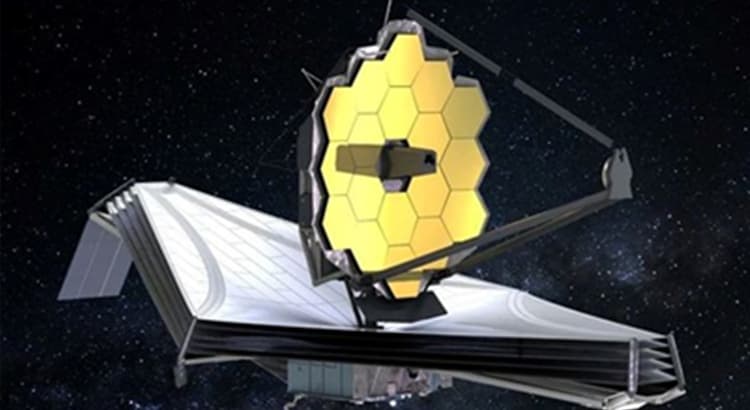Howdy, fellow cosmic enthusiasts! The launch of the James Webb Space Telescope (JWST) has stirred up a celestial storm of curiosity, and at the heart of the excitement is a question that echoes through the cosmos: How far back in time can the James Webb telescope see?
Let’s embark on a cosmic journey to unravel the temporal mysteries unveiled by this groundbreaking telescope and explore the vast reaches of the universe it’s poised to illuminate.
To understand the temporal prowess of the James Webb Space Telescope, we must delve into the concept of “lookback time.” As light travels through the vast expanse of space, it takes time to reach us. Therefore, when we observe distant celestial objects, we are essentially peering into the past.
The farther away an object is, the longer its light has traveled, providing a snapshot of the universe at an earlier epoch.
JWST, positioned at the second Lagrange point (L2) approximately 1.5 million kilometers from Earth, is primed to gaze deep into the cosmos. Its suite of advanced instruments, tuned to the infrared part of the electromagnetic spectrum, allows it to pierce through cosmic dust clouds and capture the faint glow of distant galaxies, providing a temporal portal to the universe’s early days.
The primary objective of JWST is to explore the universe’s first light, a period known as the “Epoch of Reionization.” This epoch, occurring roughly a billion years after the Big Bang, marks the era when the first galaxies formed and the universe transitioned from an opaque, neutral state to a more transparent and ionized state.
By observing objects at extreme distances, JWST can potentially see back to when these galaxies were in their infancy. This capability offers astronomers a unique opportunity to study the formation and evolution of galaxies during a pivotal era in cosmic history.
One of JWST’s flagship instruments, the Near-Infrared Camera (NIRCam), is specifically designed to capture the faint light emitted by these distant galaxies.
NIRCam’s sensitivity to infrared wavelengths enables it to detect objects that are otherwise obscured by cosmic dust, providing a clearer view of the early universe.
Moreover, the telescope’s “Deep Field Observations” involve capturing light from seemingly empty patches of the sky for extended periods. This technique allows JWST to detect the faintest, most distant galaxies, pushing the boundaries of our observational capabilities and providing glimpses into the cosmic dawn.
As we ponder how far back in time JWST can see, it’s crucial to appreciate the broader implications of its mission. The telescope’s temporal reach not only allows us to witness the birth of galaxies but also to trace the evolution of cosmic structures, from the earliest cosmic filaments to the majestic galaxy clusters that define the universe on its grandest scales.
The James Webb Space Telescope represents a technological marvel, poised to rewrite the cosmic narrative and deepen our understanding of the universe’s origins.
As the telescope embarks on its mission, astronomers anticipate that JWST’s observations will unlock new chapters in the cosmic storybook, revealing celestial tales that have remained shrouded in the cosmic mists.
In conclusion, the question, “How far back in time can the James Webb telescope see?” invites us to contemplate the temporal odyssey that JWST promises to undertake.
With its infrared vision and unparalleled observational capabilities, JWST is set to unveil the secrets of the early universe, offering a cosmic time machine that transports us to the cosmic dawn.
As we stand on the brink of a new era in astronomical discovery, the universe’s chronicles await, and with JWST as our guide, the journey promises to be nothing short of extraordinary. Happy temporal stargazing!





